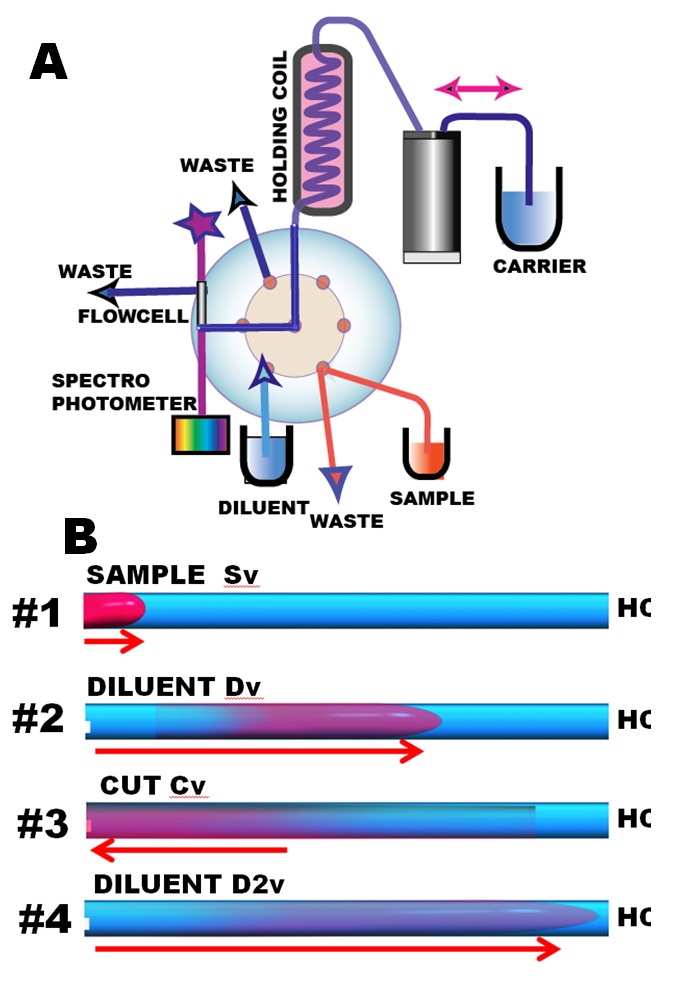Sample Preparation by Sequential Dilution On-line
2.2.6.G.
Quality assurance and process control in chemical industry relies on analysis of solutions of high concentrations, which can not be accommodated within the calibration range of spectrophotometry, or by other methods of instrumental analysis. Thus, for example, in biotechnology, concentration of glucose in a fermentation tank is 10 times higher than can be measured by spectrophotometry. In dye production, sample concentrations are 100 times higher than a spectrophotometer with 0.1mm light path can accommodate. In automated textile dyeing, concentrated solutions of blue, yellow and red dyes must be monitored and blended with high precision and reproducibility. In the pharmaceutical industry samples must be diluted prior to chromatography. Analysis of fertilizers for essential elements requires extensive dilution of the matrix components prior to measurement by ICP or by AA. Therefore sample preparation by serial dilution is a frequent task, usually performed by dispensing small sample volumes into a large volume of diluent either manually, or by means of automated dispensers. The advantage of dispensing is that diluted samples can be stored and/or split for different assays (FloPro Sampler Global FIA), but its use for continuous monitoring, or for analysis of a large number of samples, diluting by dispensing is limited by the number of available containers.

Sequential dilution, performed on-line with Sequential Injection system (A) comprises four steps (B):
1.Sample injection, 2. Sample dilution, 3. Removal of the front section of diluted sample by cut, 4. Second dilution of the remaining tail section of the sample zone.
Since each step amplifies dilution of the previous one, a sample can be diluted to any desired degree up to 1: 1000 times in less than 2 minutes. The on-line processing can accommodate an unlimited number of samples. The degree of dilution and its precision can be monitored either for series of samples or even for each individual sample by using a tracer (2.2.6.J.). Spectrophotometric or fluorescence based assays can be integrated with Sequential Dilution in the same instrument by replacing diluent with a solution of a suitable reagent (Glucose 2.2.11.C.). The Sequential Dilution system can serve as front end sampler for a variety of analytical instruments.









